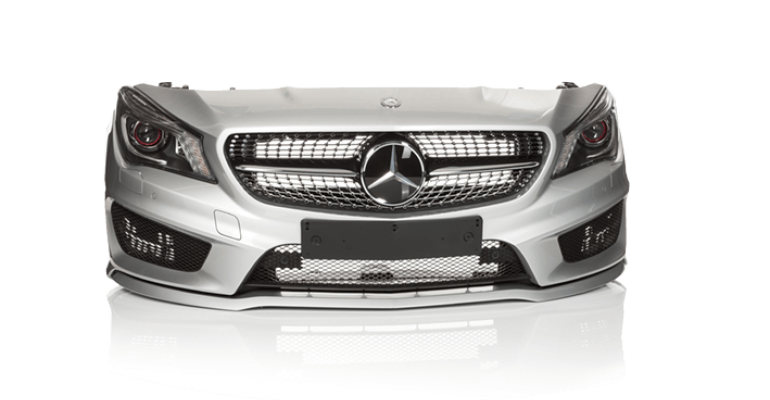BIRMINGHAM, MI – HBPO, a leading supplier of front-end modules, plans to open two new assembly plants in Mexico this year to help sustain its growth in North America where it hopes its annual revenues will top $1 billion by 2022, a top executive says.
The company, a joint venture between Hella, Behr and Plastic Omnium, has grown quickly since its formation in 2004 and its global revenues now exceed $2.33 billion, double the 2011 total.
HBPO is targeting North America for further growth with the construction of new plants in Aguascalientes and Saltillo, Mexico, says Diana Mannino (pictured, below left), president of HBPO operations in North America. The JV already operates plants in Puebla, Toluca and San José Chiapas, Mexico, Mannino says during her presentation at Autocom’s recent Tech Crawl.
Mannino acknowledges that with two plants ready to come on line this year the company is concerned about the ongoing discussions around the North American Free Trade Agreement. However, she says HBPO will have to adjust as the negotiations unfold and makes no predictions about the outcome or their potential impact on the company's operations.
Mannino says HBPO expects to add an assembly plant in southeastern Michigan, which remains a major hub for vehicle assembly, to fortify its plans for future growth and to more than double employment in North America within the next four years.
In the past three years alone, HBPO has opened four new North American assembly plants and added five new automotive customers, including two electric-vehicle makers, Mannino says.
The company also increased production of plastic components 50% earlier this year with the addition of a third injection-molding press at its assembly plant in Puebla, whose products could be subject to tariffs depending on the results of the NAFTA talks.
HBPO removes the complexity from the automaker’s assembly operations by taking responsibility for the procurement and assembly of the vehicle’s front end. The supplier provides the automaker with a single front-end assembly whose content can vary by design.
 Mannino notes HBPO also significantly reduces the number of assembly steps or stations on the automaker’s assembly line, which in turn can reduce line-side floor space – approximately 3,000-4,000 sq.-ft. (279-372 sq.-m). It also can reduce the warehouse space needed for storing components by up to 30,000 sq.-ft. (2,790 sq.-m), she says.
Mannino notes HBPO also significantly reduces the number of assembly steps or stations on the automaker’s assembly line, which in turn can reduce line-side floor space – approximately 3,000-4,000 sq.-ft. (279-372 sq.-m). It also can reduce the warehouse space needed for storing components by up to 30,000 sq.-ft. (2,790 sq.-m), she says.
The company also saves working capital and reduces complexities in procurement and logistics by handling pieces from 20 to as many as 80 suppliers.
“The number of new-vehicle models equipped with HBPO front-end modules in Canada, the U.S. and Mexico is expected to grow by 60%, from 12 in 2017 to more than 19 in 2022,” Mannino says. “Our annual sales in North America are expected to increase by 70% to more than $1 billion over the same period.”




